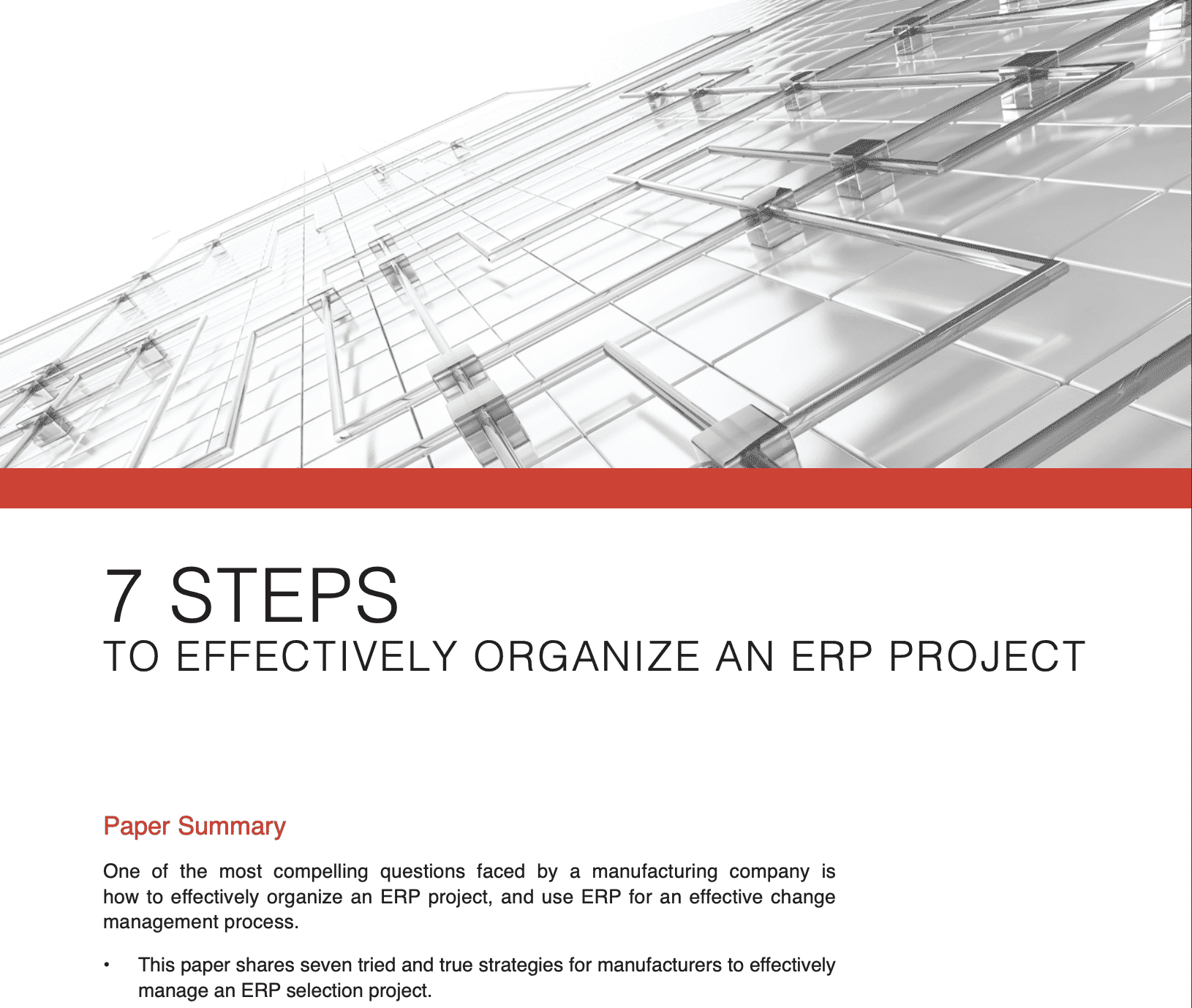7 Tips to Optimize Business-to-Business eCommerce Channels
This blog post looks at the disruptive forces associated with business-to-business eCommerce channels. Useful tips help teams manage the proliferation of channels available to today’s business buyer.
The business-to-business buyer is operating in a time of unprecedented change. Here are tips to Optimize eCommerce channels for business-to-business.
As ERP selection consultants out in the field, we see that rapidly evolving buyer expectations are at the root of this time of transformation.
Researchers expect that by 2020, business-to-business purchases will double consumer purchases in the amount of business transacted – with business-to-business eCommerce topping $6.7 trillion.
Given that growth, it’s imperative that industrial suppliers, manufacturers, distributors and other organizations serving these buyers keep pace with these disruptions.

Shifting Expectations
Business-to-business buyers now expect the same experience available to business-to-consumer buyers, favoring a “self-serve model” of fast, accurate online purchasing platforms instead of legacy models of past decades.
No longer do industrial buyers wish to interact with sales reps in person, on the phone or via e-mail. Nor do industrial buyers wish to pore over paper catalogs or other manually-intensive and time-consuming processes.
Instead, the business buyer brings a “consumer purchaser” expectation to the industrial marketplace – favoring streamlined, optimized and accurate on-line buying channels.
Manufacturers and suppliers that reward these buyers with the expected online experience – such as providing a robust business-to-business eCommerce channel – will earn buyer loyalty and increase sales.
Business-to-Business eCommerce Defined
At its most fundamental, eCommerce can be defined as the selling and buying of goods and services over the internet.
A business-to-business eCommerce channel refers to commerce between two businesses rather than between a business and an individual consumer.
Transactions at the wholesale level are usually more complex, involve more parties and decision makers, and represent services or goods purchased at larger values than those at the consumer level.
Ultra’s independent ERP consultant team also sees another differentiator. With business-to-business eCommerce, selling sometimes requires participating in a bidding process by responding to a purchaser’s request for proposals.
Note these models are not mutually exclusive. There are instances when a company may sell both to other companies as well as to consumers.
Examples of business-to-business eCommerce channels include Alibaba.com – the world’s largest B2B site – as well as Grainger.com and other portals.
What’s Expected?
For the distribution companies Ultra serves, as well as industrial suppliers and manufacturers, we guide teams to keep in mind the following areas of buyer expectations when developing a business-to-business eCommerce channel.
- Well organized, searchable information about products and services
- Customer-specific pricing based on previous interactions of the purchaser
- Access to previous orders, pricing, and delivery history
- Inventory availability in real-time
- Features for competitive bidding
- Cart view with running total
- An overall “Amazon-like” experience via the user interface and complete feature set
Tips to Optimize Business-to-Business eCommerce Channels
Given transformed buyer expectations, business-to-business eCommerce is a central strategy for driving core business priorities — from increasing revenue to improving overall customer satisfaction and loyalty.
Recent research conducted by Forrester Consulting finds that only 26 percent of industrial companies have fully implemented best practices that correlate with an optimized business-to-business eCommerce channel.
As part of Ultra’s ERP services, we guide companies to keep in mind these seven tips when looking to optimize eCommerce channels:
- Integrate eCommerce with ERP: For industrial sellers and others, the data and processes of both front and back offices are intricately linked, making an ERP-eCommerce integration imperative for success. eCommerce that fully integrates with an organization’s ERP system ensures seamless order processing and inventory visibility for the buyer. Integration automates the flow of key types of data, such as shipping/tracking, order, customer, item, and other details.
- Implement a single, standardized database: Is there a single database between the eCommerce site and ERP or is there a replication process? If replication, how often? The database structure must facilitate instant ordering and visibility to meet buyer expectations.
- Offer self-service functionality: Design the eCommerce channel to increase operational efficiencies, providing customers with self-service features when placing orders, checking status, and paying invoices. Self-service functionality helps capture new customers and strengthens relationships with existing ones.
- Build in robust security, site performance and reliability: System reliability, speed and performance, while minimizing downtime or outages, are mission-critical. Offering the latest in secure payment and credit card processing is also a key expectation for a robust business-to- business eCommerce channel.
- Design a streamlined, responsive user experience: Responsive design – meaning the content will automatically adjust based on the device the user is using, whether it’s a phone, desktop/laptop computer or tablet – is expected. Intuitive design is also needed so it is easy to navigate around the site. Offer accurate, concise product descriptions, messaging, product specifications, photos, return/shipping policies, and other buyer-focused information.
- Enable system personalization: It’s key to offer the ability to tailor the eCommerce experience based on user’s log-in, organization profile, purchase history, and other account-specific data. From a business perspective, personalized eCommerce websites drive increased business when complete order history is instantly available to buyers from the same organization. This helps customers place more frequent orders, discover relevant product lines/categories, and increase average order size.
- Establish a dedicated internal team: A final recommendation for success is to build a dedicated and comprehensive internal team for the development, launch, and maintenance of the business-to-business eCommerce channel. Make eCommerce a core part of the overall business strategy. Ensure the eCommerce and sales organizations share common goals. Apply the needed technical resources and solutions that can flex and adapt to changing business needs.
Business-to-Business eCommerce Channels – Next Steps
As noted above, annual business-to-business eCommerce activity is expected to exceed $6.7 trillion within a year. To remain competitive, industrial suppliers, manufacturers, distributors, and other organizations must optimize omnichannel order management, specifically business-to-business eCommerce, following the approach shared here.
- Read more about how to improve omni-channel order management. The post outlines features offered by modern ERP systems to support multi-channel order integration and leverage modern features for real-time inventory views, unified pricing and more.
- Ultra also offers a white paper entitled “How to Make Money in Wholesale Distribution with Amazon in the Market” which provides additional insight.
- Considering your own business-to-business eCommerce channel strategy? Contact the Ultra team to get the conversation going.
7 Steps to Effectively Organize an ERP Project
The 7 Steps to Effectively Organize an ERP Project is designed for ERP project teams from today’s forward-thinking manufacturing and distribution organizations.
Read tried and true strategies for manufacturers to effectively manage an ERP selection project. See what it takes to be successful and more with this Download.
Table of Contents
More ERP material...
AI in Food and Beverage Manufacturing
Discover how AI is revolutionizing food and beverage manufacturing, enhancing quality, reducing…
How ERP for Quality Control Eliminates Manual Documentation Chaos
This post will examine why managing quality records outside of an ERP…
Assessing Your AI Maturity
This article breaks down how businesses can measure their AI maturity to…




